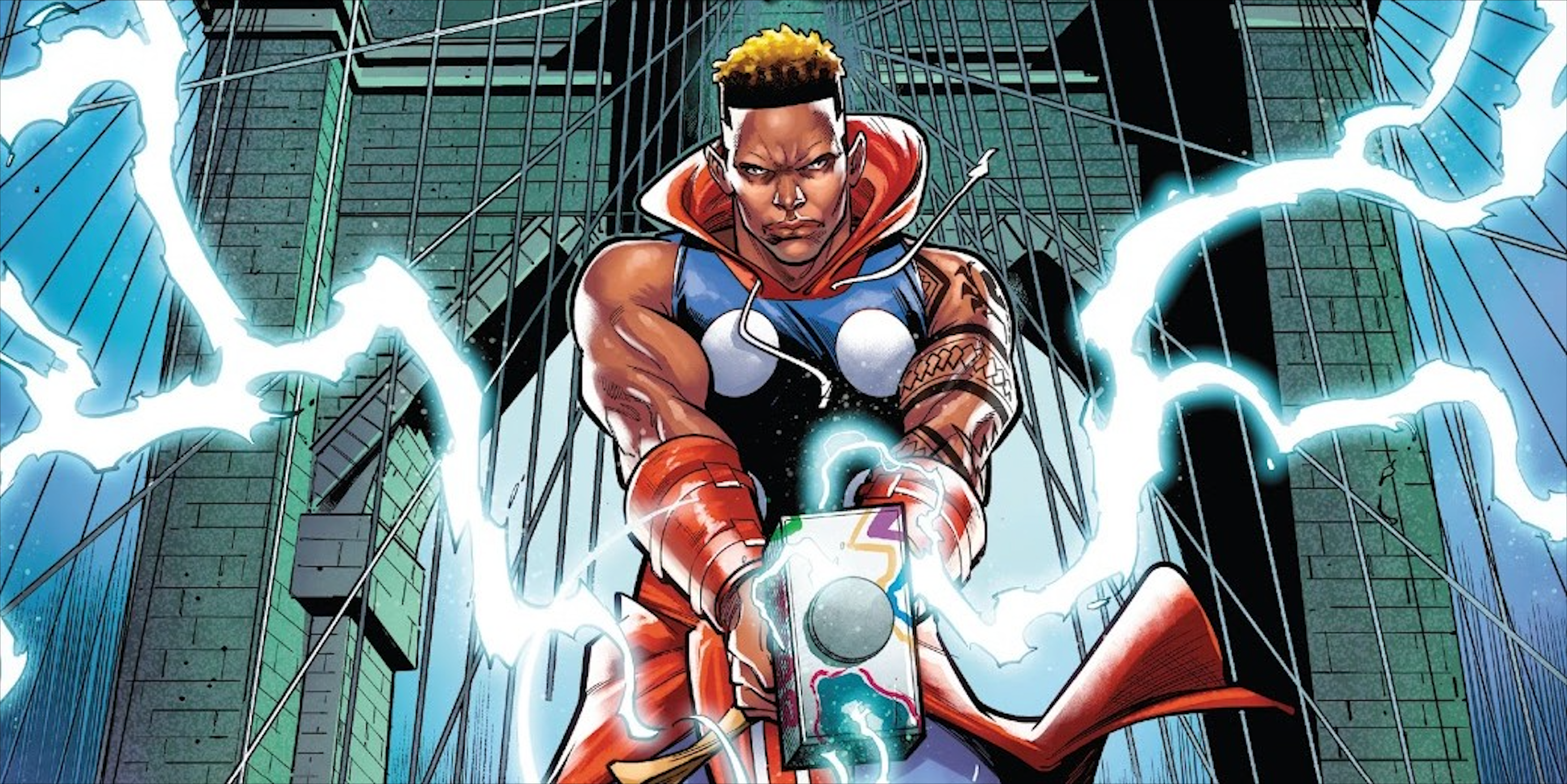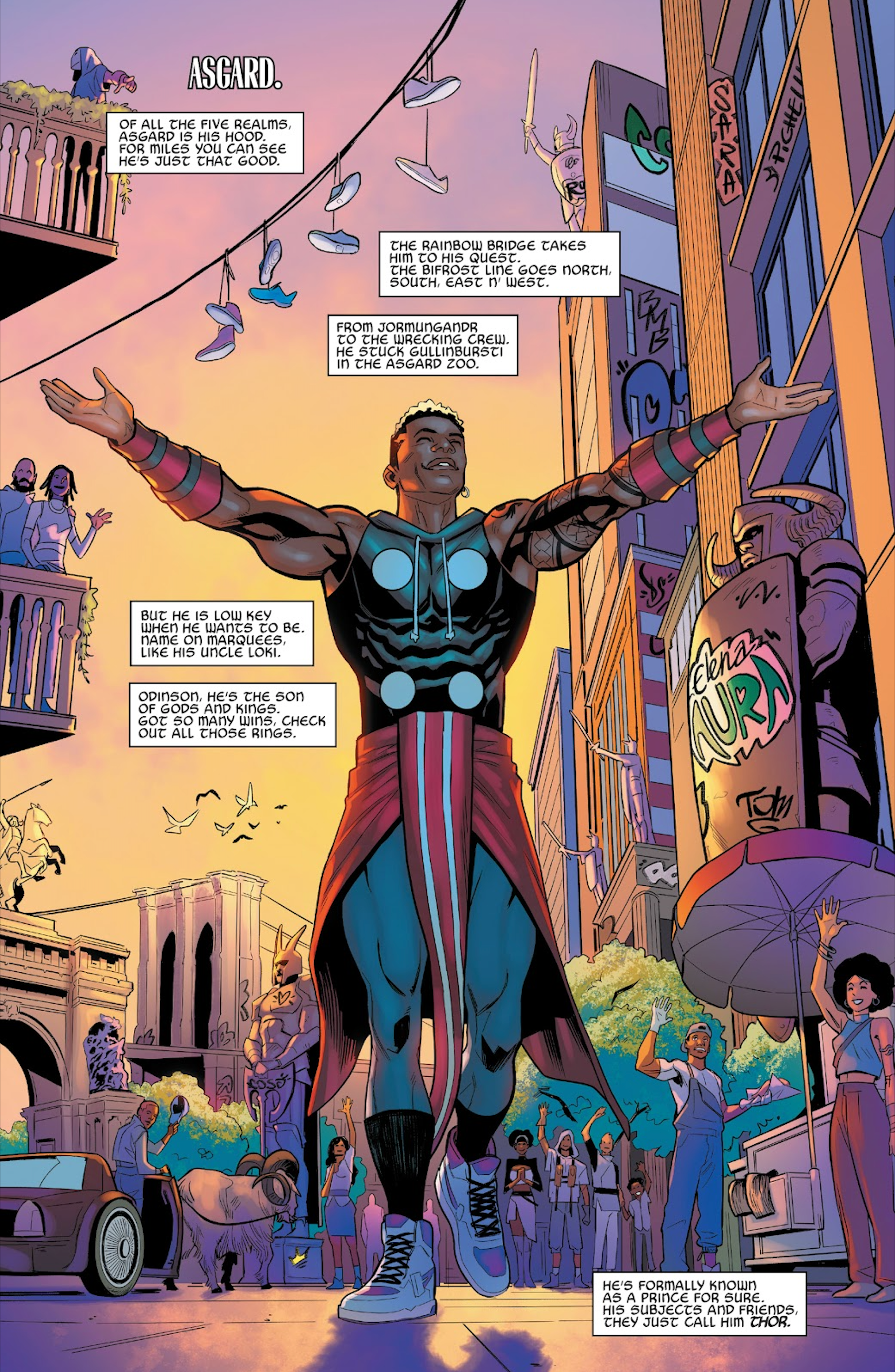Warning: contains spoilers for What If...? Miles Morales Became Thor? #4
Marvel's latest comic in which Miles Morales becomes the mighty Thor received strong backlash from fans on social media after images from the issue began circulating online. Part of a series where Miles transforms into other heroes from across the Marvel Universe, What If...Miles Morales Became Thor? #4 depicts the second Spider-Man (after Peter Parker) in an all-new Asgard as he struggles with his responsibilities as the successor to Odin as the realm's new King. Fans have widely ridiculed the issue, stating that many of the creative choices are insensitive and even insulting towards Black culture, and even Miles himself as an Afro-Latinx character.
In anticipation of Spider-Man's upcoming 60th anniversary at Marvel, Marvel is releasing a considerable amount of Spider-Man content. Among the new stories is a What If? series centering around Miles Morales, the Spider-Man from the Ultimate Universe (who was since brought over to the 616 mainline universe) who has become a popular character in his own right. In previous issues, Miles has already become Captain America, Wolverine, and the Incredible Hulk, and now the character wields the hammer Mjolnir as Thor.
In What If...Miles Morales Became Thor? #4, written by Yehudi Mercado with art by Luigi Zagaria, Miles (here called Thor) lives in a hybrid world of Asgard and Brooklyn. Graffiti adorns buildings, shoes hang on power lines, and cars are even pulled by goats. The criticisms by fans point out this aesthetic immediately, pointing out the stereotypical environment and Miles' narration ("Of all the five realms, Asgard is his hood" for example). The shoes hanging on power lines in particular was a confusing part of this new version of Asgard, as shoes thrown onto power lines often belong to someone who has died. Here, however, they are used as decoration. His look is another point of consternation; Thor wears sneakers and carries a version of Mjolnir covered in graffiti, and after the weapon is summoned, he shouts "Hammer time!" These stereotypical elements and misinformed depictions of Miles's neighborhood have led many fans to liken the issue to minstrelsy.
To add insult to injury, this Thor doesn't possess the typical loquacious Asgardian vocabulary; instead, he speaks as 616 Miles with an exaggerated stereotypical slang (and in the entire book, no other character speaks like this). Fans on social media have likened these and other stereotypical elements to a comic version of a Blaxploitation film, and it's not hard to see their point of view. By combining Miles Morales with Thor, the writers have also created yet another Black superhero with electricity-based powers; whether or not this move was intentional is immaterial, as the sheer overabundance of these heroes is a long-running trope that is impossible to avoid.
It is worth noting that, although Miles was created by Brian Michael Bendis, a white writer himself, this issue of the series is the only one not written by a Black writer, as previous issues have been written by Cody Ziglar, Anthony Piper, and John Ridley. While the story has effective character moments, with Loki being Thor's uncle rather than his brother, and Thor's reluctance to take the throne in stark contrast to the 616 version, it is too reliant on exploitative elements and outdated cultural stereotypes. Perhaps this is a sign that continually combining characters such as Miles Morales and Thor is less effective than simply writing these superheroes as themselves; Miles Morales is a fan-favorite in part because of his everyman qualities and his desire to help others, and that is more than enough to tell an effective story.


